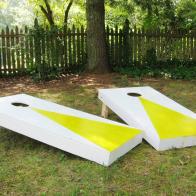1 / 13
Photo: Radim Schreiber/FireflyExperience.org
Find Out How to Attract Fireflies to Your Yard or Garden
Yards and gardens feel magical when fireflies flash and glow. If you live in the Southern or Eastern United States, you probably call them "lightning bugs," says Radim Schreiber, an award-winning nature photographer who posts at Firefly Experience. “The name ‘firefly’ is more common in the North and West.”
It's both fun and helpful to have fireflies around. As Schreiber writes in his Firefly Experience book, their larva eat snails and slugs that feast on our plants. Unfortunately, they're disappearing due to pesticide use, light pollution and habitat loss. Use our tips to attract these good guys and put nature’s twinkle lights in your garden.









